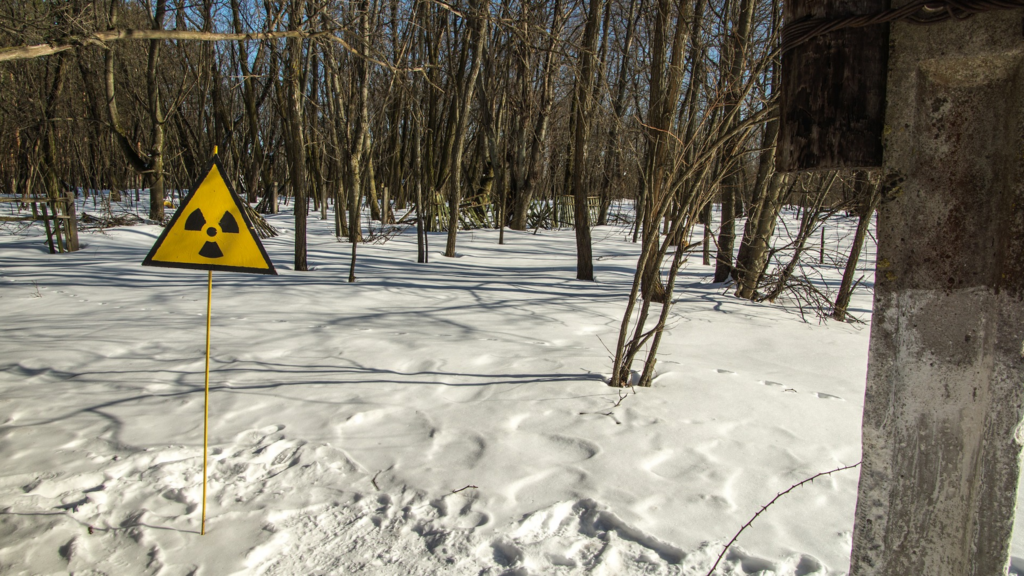
Crops grown near Chernobyl are still contaminated due to the 1986 nuclear accident, new research shows.
Scientists analysed grains including wheat, rye, oats and barley and found concentrations of radioactive isotopes – strontium 90 and/or caesium 137 – above Ukraine’s official safe limits in almost half of samples.
The researchers also examined wood samples and found three quarters contained strontium 90 concentrations above Ukrainian limits for firewood.
The study was carried out by the Greenpeace Research Laboratories at the University of Exeter and the Ukrainian Institute of Agricultural Radiology.
“We focussed on strontium 90 because it is known to be currently present in soil mostly in bioavailable form, meaning it can be taken up by plants,” said lead author Dr Iryna Labunska, of the Greenpeace Research Laboratories at the University of Exeter.
“Ukrainian government monitoring of goods containing strontium 90 ended in 2013, but our study clearly shows this needs to continue.
“People need to be aware of the ongoing contamination of soil and plants, and they need to be advised on the safest agricultural and remediation methods.
“We found very high levels of strontium 90 in wood ash – yet many people still use ash from their fires as a crop fertiliser.”
Dr David Santillo, also of the Greenpeace Research Laboratories, added: “Our findings point to ongoing contamination and human exposure, compounded by lack of official routine monitoring.
“This research also highlights the potential for Chernobyl-derived radiation to be spread more widely again as more and more wood is used for power generation in the region.”
The study analysed 116 grain samples collected during 2011-19 from fields in 13 settlements in the Ivankiv district of Ukraine – about 50km south of the power plant and outside its “exclusion zone”.
Wood samples – mostly pine – were collected from 12 locations in the same district during 2015-19.
The study found:
- 45% of grain samples from the north-east part of the Ivankiv district contained strontium 90 at above permissible levels for human consumption. This situation will likely persist for at least another decade.
- Taking both strontium 90 and caesium 137 into account, combined activity concentrations of these isotopes were above permissible levels in 48% of grain samples.
- Nevertheless, modelled data show that the greater part of the Ivankiv district could produce grains containing strontium 90 below corresponding Ukrainian permissible levels.
- In the case of wood, it is estimated that levels of strontium 90 could exceed permissible levels for firewood in forest woods from vast areas in the north-east of the Ivankiv district.
- Wood from these territories may still contain strontium 90 above permissible levels by the end of this century.
- In one sample of ash from a domestic wood-burning oven, strontium 90 was found at a level 25 times higher than in the most contaminated wood sample collected in this study.
The authors recommend:
- Reinstating environmental and food monitoring programmes, and ensuring these are properly financed into the future.
- Government-led agricultural policies such as liming and using organic fertilisers, which could reduce strontium 90 concentrations by about half.
- Decreasing or eliminating the use of radioactively contaminated wood in fires.
- Establishing a programme to monitor radioactive contamination of ash in both households and at the local thermal power plant (TPP).
- Providing the population with information on safe handling of radioactively contaminated ash, and establishing a centralised disposal service for such ash.
Professor Valery Kashparov, Director of the Ukrainian Institute of Agricultural Radiology, added: “Contamination of grain and wood grown in the Ivankiv district remains of major concern and deserves further urgent investigation.
“Similarly, further research is urgently needed to assess the effects of the Ivankiv TPP on the environment and local residents, which still remain mostly unknown.”
In a previous study, the researchers found that milk in parts of Ukraine had radioactivity levels up to five times over the country’s official safe limit.
The new study was supported by the National University of Life and Environmental Sciences of Ukraine, the Ministry of Education and Science of Ukraine, and the Science Unit of Greenpeace International.
The paper, published in the journal Environment International, is entitled: “Current radiological situation in areas of Ukraine contaminated by the Chornobyl accident: Part 2. Strontium-90 transfer to culinary grains and forest woods from soils of Ivankiv district.”
 Fix Your Toxic Home and Live Longer
Fix Your Toxic Home and Live Longer Screening truffles for radioactivity 30 years from Chernobyl
Screening truffles for radioactivity 30 years from Chernobyl Plants can take up nicotine from contaminated soils and from smoke
Plants can take up nicotine from contaminated soils and from smoke Chernobyl Radiation Surge ‘Cause for Concern,’ Say Scientists
Chernobyl Radiation Surge ‘Cause for Concern,’ Say Scientists